As traders navigate the complexities of financial markets, mastering tools like Keltner Channels can provide a competitive edge.
The strategic deployment of Keltner Channels involves a meticulous understanding of their inner workings and nuances. However, beyond the technicalities lies a realm of practical wisdom that can significantly impact trading outcomes.
These seven key tips encapsulate the essence of successful Keltner Channel trading, shedding light on crucial aspects from setup to execution.
By uncovering these insights, traders can potentially elevate their decision-making processes and refine their strategies for navigating the dynamic landscape of trading with Keltner Channels effectively.
Understanding Keltner Channel Basics
When delving into the realm of Keltner Channels, it is essential to grasp the fundamental basics that underpin this technical analysis tool.
Keltner Channels are comprised of three lines: an Exponential Moving Average (EMA) in the middle and outer bands based on the Average True Range (ATR).
The upper band is calculated as EMA + 2 * ATR, while the lower band is EMA – 2 * ATR. These bands adjust to market volatility, making them valuable for identifying trends.
The middle EMA line acts as a dynamic level of support or resistance during trends. By using a common setup like EMA (20) for the middle line and 2 x ATR (10) for the upper and lower bands, traders can gauge price action within these boundaries.
Keltner Channels serve as a reliable technical indicator, offering insights into potential trend reversals and breakouts based on the average true range and price movements.
Setting Up Keltner Channels Correctly
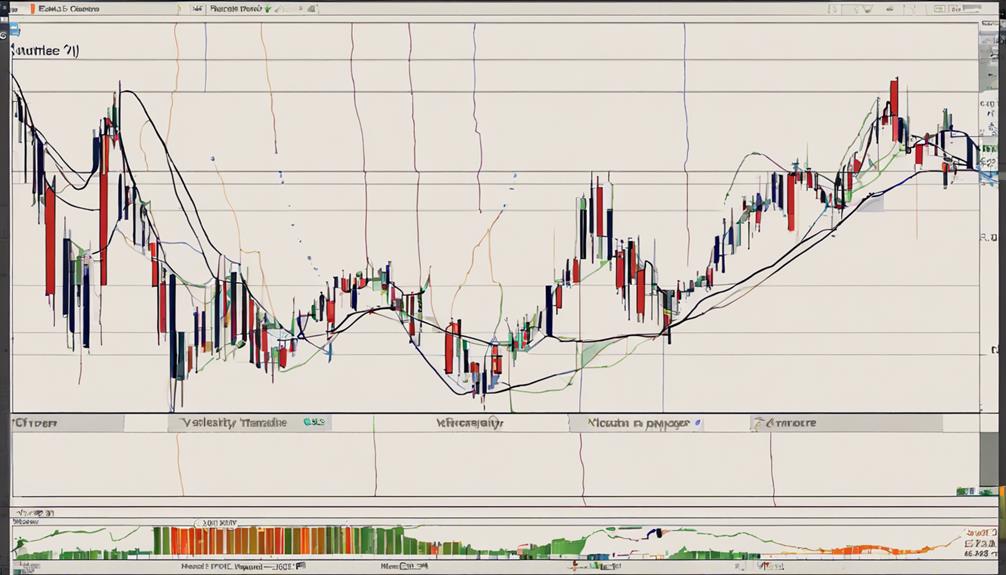
Proper configuration of Keltner Channels is essential for accurately reflecting recent market volatility and price movements. When setting up Keltner Channels, traders commonly use an Exponential Moving Average (EMA) with a length of 20 periods for the middle line.
The upper and lower bands are typically determined by multiplying the Average True Range (ATR) by 2. Adjusting the ATR multiplier allows traders to fine-tune the width of the channel, affecting its sensitivity to price fluctuations.
By ensuring the Keltner Channels are correctly configured, traders can effectively gauge market volatility and identify potential price levels for support and resistance. These dynamic support and resistance levels derived from properly set up Keltner Channels serve as valuable indicators for making informed decisions on entry and exit points in Keltner Channel trading strategies.
This meticulous setup process lays the foundation for utilizing Keltner Channels as a tool for analyzing price movements and market trends.
Interpreting Keltner Channel Signals
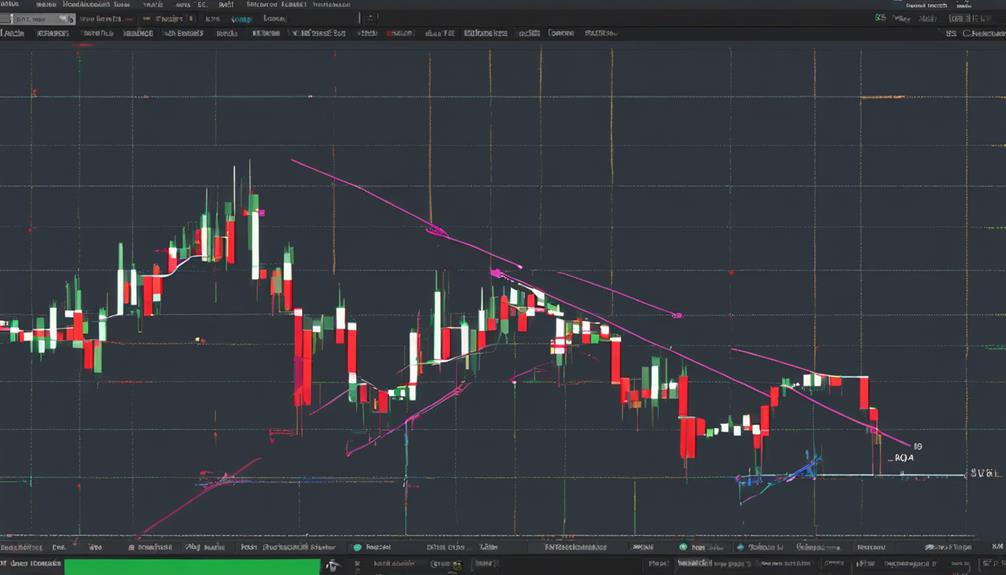
To effectively interpret Keltner Channel signals, traders must keenly observe price movements in relation to the upper and lower bands, recognizing the indications of trend strength or weakness based on these key levels. When analyzing Keltner Channels, traders should consider the following:
- Price Levels: Price hitting the upper band of the Keltner Channel can indicate a strong trend, while a touch of the lower band in a rising channel may suggest a weakening trend. Understanding these price movements in relation to the channel boundaries is essential for making informed trading decisions.
- Trend Direction: The slope of the Keltner Channel can provide valuable insights into the direction of the price trend. Traders should pay attention to the angle of the channel to assess the strength and sustainability of the current trend.
- Breakout Signals: Sideways movement within the channel can signal potential breakouts. Traders can look for instances where the price breaks out of the channel boundaries to identify new trading opportunities and potential trend reversals.
Implementing Effective Entry Strategies
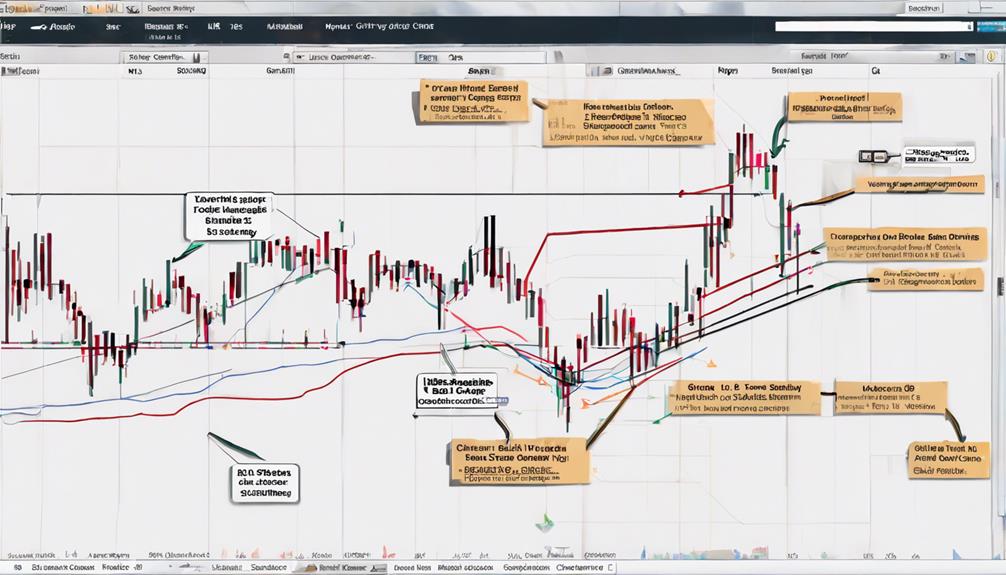
The effective implementation of entry strategies when trading with Keltner Channels is crucial for maximizing profit potential and minimizing risks. Timing entry signals based on breaks above the upper band or utilizing the middle line in trending markets can enhance trading outcomes.
Setting profit targets and combining Keltner Channels with complementary indicators like RSI or MACD can provide traders with additional confirmation and confidence in their entry decisions.
Timing Entry Signals
When considering effective entry strategies in trading with Keltner Channels, it is essential to utilize multiple indicators to validate signals and increase the accuracy of timing entry points. To enhance the precision of entry signals, traders can follow these strategies:
- Incorporate Confirmation Indicators: Use tools like RSI or MACD to confirm signals generated by Keltner Channels before entering a trade.
- Utilize Breakout Opportunities: Look for price movements breaking out of the Keltner Channel boundaries as potential entry points, indicating potential momentum.
- Combine with Candlestick Patterns: Enhance entry timing accuracy by identifying candlestick patterns in conjunction with Keltner Channels for more reliable entry signals.
Setting Profit Targets
Incorporating effective entry strategies with Keltner Channels, the process of setting profit targets involves strategically identifying key support and resistance levels using the upper and lower bands of the channel. Traders can capitalize on buying near the lower band in an uptrend or selling short near the upper band in a downtrend.
Validating entry signals with price action confirmation enhances the accuracy of profit target placements. Analyzing multiple timeframes confirms support or resistance levels, aiding in precise target setting.
Adjusting position size based on risk-reward ratios optimizes trading decisions with Keltner Channels. By aligning entry strategies with profit targets and considering critical levels within the channel, traders can make informed decisions that increase the likelihood of successful trades.
Managing Risk With Keltner Channels
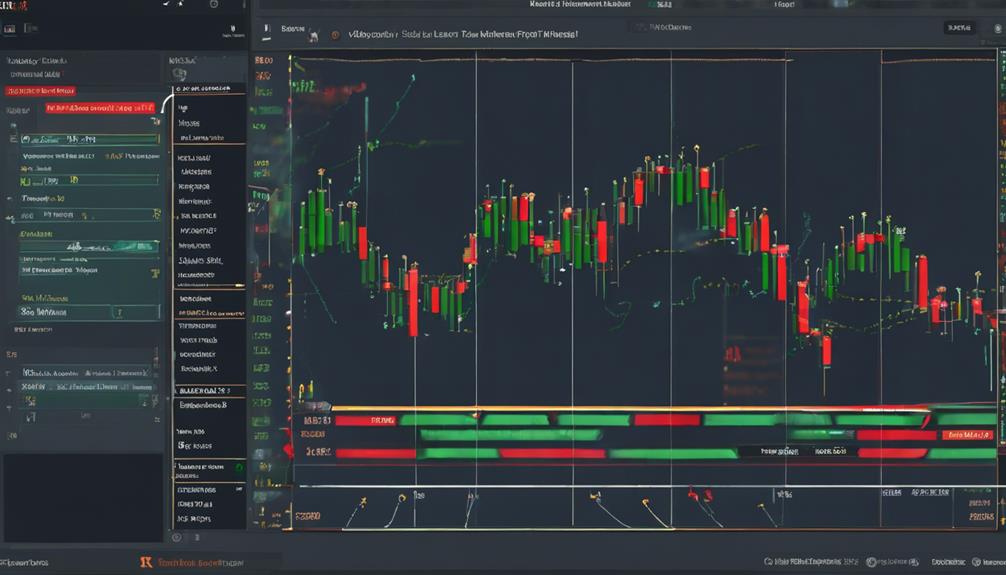
Utilizing Keltner Channels for risk management involves implementing strategies like setting stop-loss orders based on the dynamic support level provided by the lower band.
Traders can optimize risk by aiming for profit targets near the upper band to capitalize on potential price movements.
Adjusting position sizes in accordance with the distance between the price and the bands, as indicated by Keltner Channels, offers a structured approach to managing risk effectively.
Risk Management Strategies
To effectively manage risk when trading with Keltner Channels, utilizing stop-loss orders based on channel boundaries and adjusting position sizes according to channel width are crucial risk management strategies. When incorporating Keltner Channels into your trading approach, consider the following:
- Set Stop-Loss Orders: Use channel boundaries to place stop-loss orders strategically, ensuring protection against adverse price movements.
- Adjust Position Sizes: Tailor your position sizes based on the width of the Keltner Channel, aligning them with your risk tolerance and market conditions.
- Incorporate Trailing Stops: Implement trailing stops along the channel lines to secure profits and limit potential losses as the trade progresses.
Setting Stop-Loss Orders
When managing risk with Keltner Channels, a key aspect is setting stop-loss orders strategically beyond the outer bands to account for market volatility. Traders can determine the appropriate distance for stop-loss orders by multiplying the Average True Range (ATR) value by a factor, ensuring effective risk management.
Utilizing the upper or lower bands of the Keltner Channel as reference points for stop-loss placement can safeguard trading capital. Adapting stop-loss orders according to shifting market conditions and price action helps mitigate unnecessary losses. Implementing proper risk management through stop-loss orders in conjunction with Keltner Channels enhances overall trading performance and minimizes potential risks.
Optimizing Exit Points Using Keltner Channels
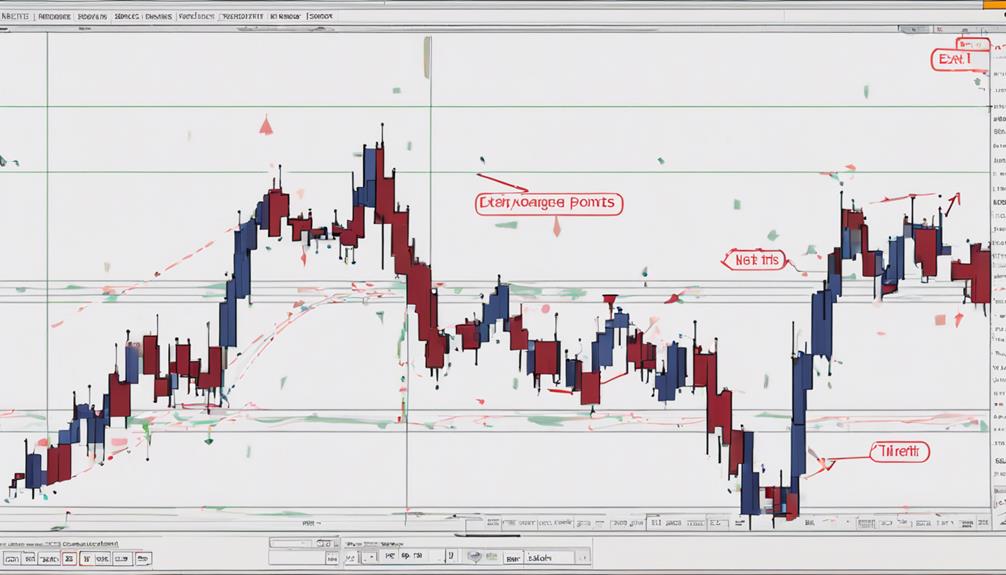
In optimizing exit points using Keltner Channels, traders can leverage the middle line as a strategic reference in trending markets.
Key Points for Optimizing Exit Points Using Keltner Channels:
- Aligning with the Trend: Exiting a trade when the price touches the middle line allows traders to capture profits in line with the prevailing trend, maximizing potential gains.
- Securing Profits: Traders often use the middle line as a reference point to secure gains and avoid potential reversals in price movement, ensuring that profits are locked in effectively.
- Structured Approach: Utilizing Keltner Channels for exits provides a structured approach to locking in profits while staying aligned with the trend, offering a systematic way to manage trades and make informed decisions based on price behavior.
Fine-Tuning Your Keltner Channel Trading Plan

By adjusting the parameters of the Keltner Channels, traders can refine their trading plan to better adapt to varying market conditions and enhance overall performance. Fine-tuning entry and exit points is crucial for success. This can be achieved by experimenting with different Keltner Channel settings, such as the EMA period and ATR multiplier. Utilizing a demo account to test various combinations of settings before implementing them in live trading can help traders identify the most effective configuration for their strategy.
Moreover, incorporating different time frames into the analysis can provide a more comprehensive view of price action and generate more precise trading signals. To increase trading accuracy, traders may consider using additional technical indicators like RSI or MACD to confirm signals generated by the Keltner Channels.
Regularly reviewing and updating the trading plan is essential to adapt to evolving market conditions and optimize performance. By staying flexible and adjusting the plan as needed, traders can better position themselves to capitalize on opportunities while managing risks effectively.
How Can I Use Keltner Channels for Effective Market Timing in Trading?
Keltner Channels are a powerful tool for unlocking market timing secrets in trading. By using these volatility-based bands, traders can identify potential buy and sell signals, as well as gauge market trends. Effectively utilizing Keltner Channels can help traders make informed and strategic decisions in their trading activities.
Frequently Asked Questions
What Is the Best Strategy for the Keltner Channel?
The best strategy for the Keltner Channel involves a combination of trend-pullback and breakout approaches tailored to different market conditions. Utilize the middle line for pullback entries and target significant price movements with breakout trades above the upper band for optimal performance.
Is Keltner Channel Strategy Profitable?
The profitability of the Keltner Channel strategy varies based on market conditions, risk management, and trade execution. Combining it with other indicators and maintaining a proper risk-reward ratio can enhance profitability potential across different asset classes and timeframes.
What Setting Should a Keltner Band Be On?
Determining the ideal setting for a Keltner Channel involves balancing sensitivity to price movements and the desired level of volatility containment. Traders often start with the standard 20-period EMA and adjust ATR multipliers to suit their strategy and asset characteristics.
Is Keltner Channel Leading or Lagging?
The Keltner Channel is a lagging indicator that reacts to price movements after they occur. Traders utilize it to confirm trend direction rather than predict future prices. While not offering early signals, it provides reliable trend confirmation.
Conclusion
In conclusion, mastering the art of trading with Keltner Channels requires a deep understanding of the technical indicators, careful analysis of price interactions, and disciplined implementation of trading strategies.
Remember, 'a smooth sea never made a skilled sailor.' By refining your skills, adapting to market conditions, and continuously learning and improving, you can navigate the complexities of trading with Keltner Channels and increase your chances of success in the financial markets.


